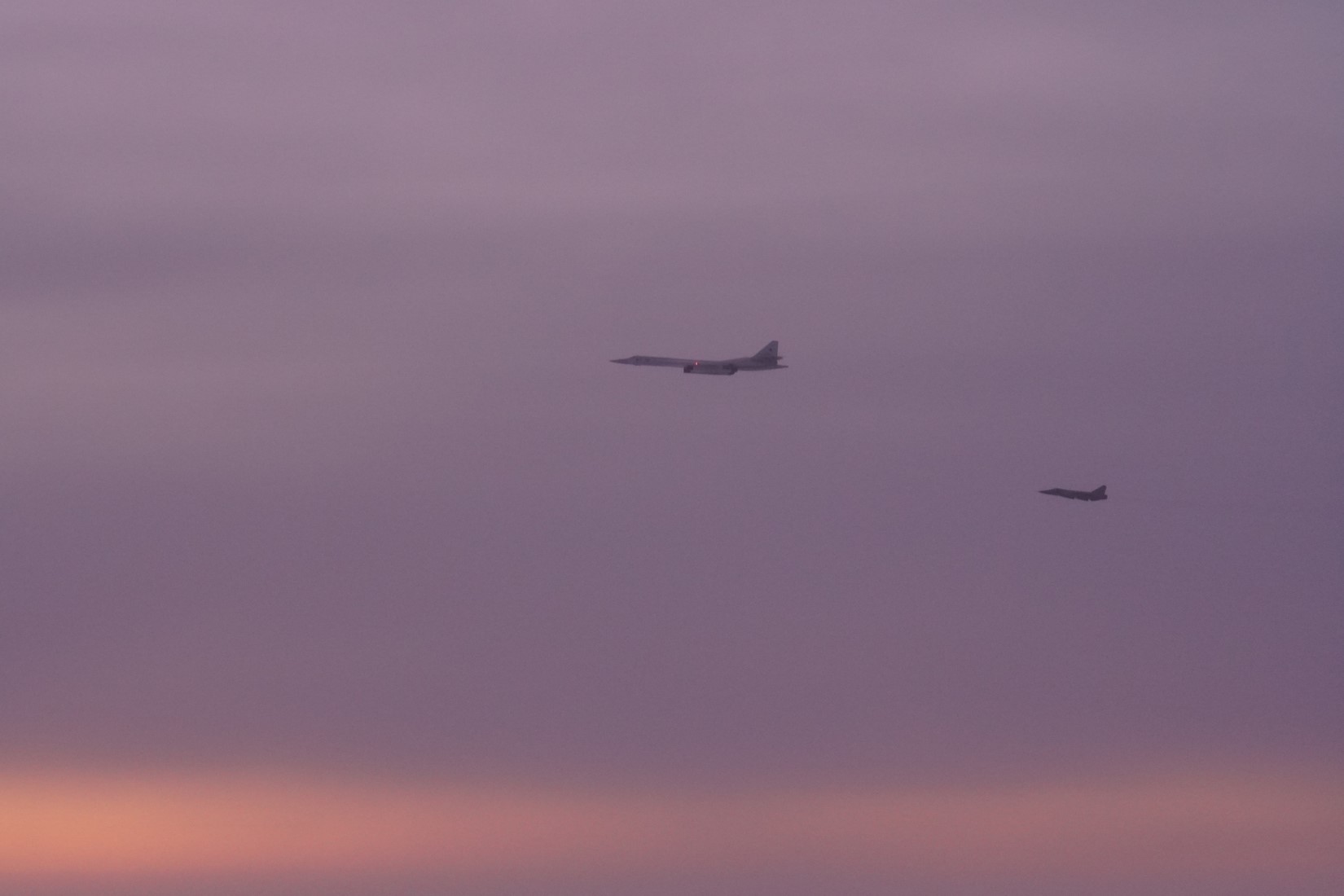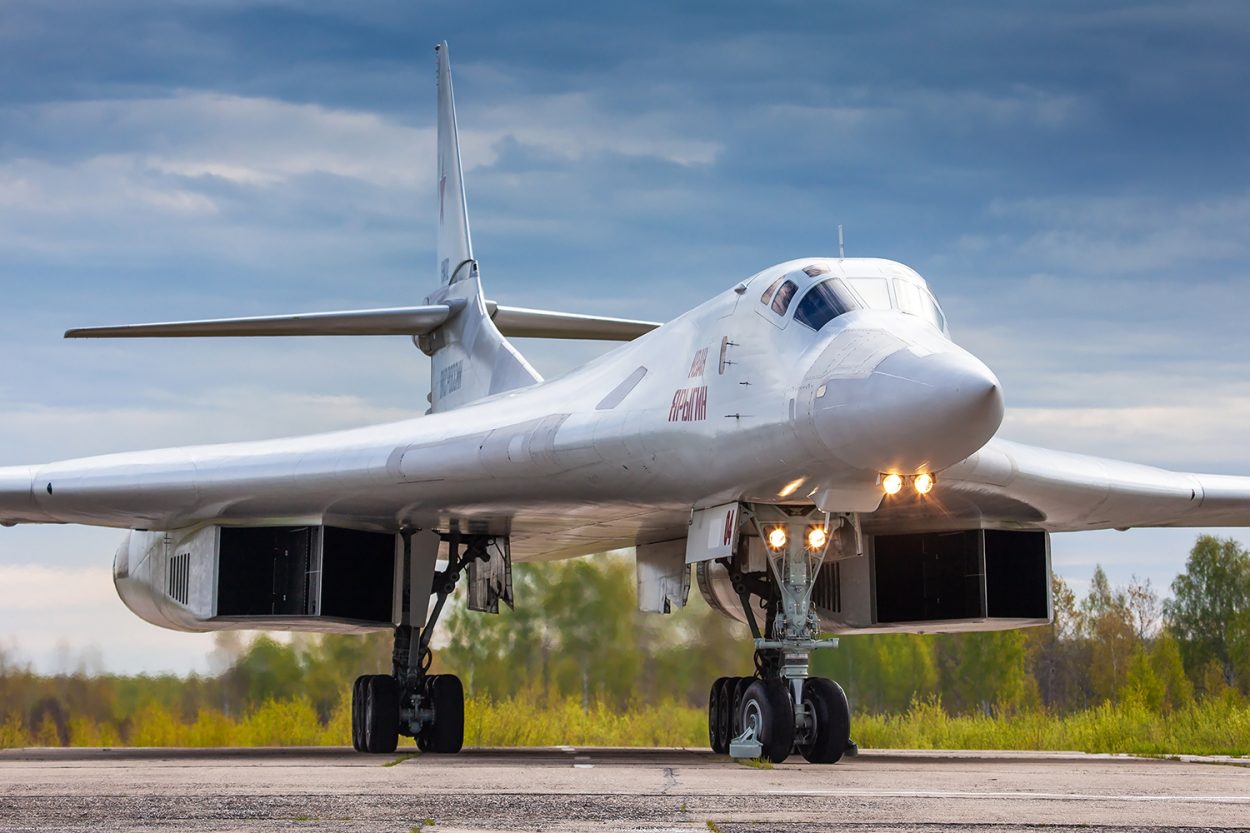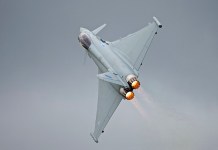Russian Tu-160 White Swan and Tu-22M3 Backfire strategic bombers flew over the Barents, Norwegian, and Black Seas in a rare instance of military brinkmanship through overflights with offensive military aircraft.
The White Swan flight was the longest sortie, lasting 13 hours, and triggered an interception by Norwegian F-35s.
The simultaneous flights of frontline strategic bombers over two military flashpoints, with long-duration sorties, are distinct from the usual flights of Tu-95MS strategic bombers or Su-27 aircraft in northern Europe.
This follows the October 19 and October 24 encounters between North Atlantic Treaty Organization (NATO) and Russian aircraft that saw a qualitative enhancement in the type of aircraft used by both sides and the boldness of the flights to convey deterrence.
Precedent Set from Last Two Encounters
On October 19, a Su-27 intercepted an RC-135 Rivet electronic warfare (EW) aircraft and two Eurofighter Typhoons. In a rare step, the Russian Ministry of Defense (RuMoD) released a video from the Su-27’s cockpit showing the Typhoons peeling off. At the same time, the RC-135 maintained its direction before presumably heading back too.
Then, on October 24, a Russian Air Force (RuAF) Sukhoi Su-27 fighter intercepted two B-1B Lancer strategic bombers over the Baltic Sea. On the same day, another Su-27 intercepted an RQ-4B Global Hawk intelligence-surveillance-reconnaissance (ISR) drone over the Black Sea.

The RuMoD said both the US jets were heading towards the internationally recognized border of the Russian Federation but turned back after the Su-27s were scrambled to intercept them.
RuMoD Videos Show Tu-160 & Tu-22M3 Flights
RuMoD also shared a video of both aircraft flying in their respective theaters. It first showed the Tu-22M3 taking off from an unidentified airfield, with a brief shot inside the cockpit.
The plane is then captured from the ground, landing at the base. This was presumably over the Black Sea. It was also escorted by a “Su-30SM of the Russian Aerospace Forces,” according to the RuMoD.
It is not clear where the Tu-22M3 took off from. Reports in August said Russia relocated the Tu-22M3 from the Soltsy-2 air base in the Novgorod region to the Olenya air base on the Kola Peninsula. This was following a Ukrainian drone attack at Soltsy-2 on August 19, where a Tu-22 was believed to have been destroyed.
While the Tu-22M3, with a range of 5,000 to 6,000 kilometers, can complete the nearly 2,500 km trip from the Arctic Circle to the Black Sea, conducting a patrol would add extra miles, and it would just about have enough fuel to make it back to base.
Thus, it can be assumed that the Backfire took off from a base closer to the Crimean Peninsula, near southwestern Russia. This is, however, a mere speculation owing to the lack of information on this front.
RuMoD: Strategic aircraft make scheduled flights over neutral waters of Barents, Norwegian, and Black seas
Tu-160 and Tu-22M3 strategic bombers were involved in the event. The longest sortie lasted more than 13 hours.
Su-30SM and MiG-31 fighter jets of the Russian Aerospace… pic.twitter.com/lo5XrZbGYG
— EurAsian Times (@THEEURASIATIMES) November 18, 2023
But the flight of the Tu-160 over the Barents and the Norwegian seas was a rare and bold move in terms of the aircraft involved and the duration of the patrol. According to the RuMoD, “MiG-31 fighter jets of the Northern Fleet escorted the strategic bombers.”
It added that the “longest sortie lasted 13 hours.” Of the two, this can be assumed to be the Tu-160 patrol since the RuMoD video shows the plane landing back at base only at dusk, in the low light time of the day.
A video from the cockpit showed a contrail from ahead of the Tu-160 at a lower altitude. This can be assumed to be the MiG-31. The Tu-160 receives mid-air refueling from an Il-78 tanker before it returns to base.

NATO Claims More Russian Aircraft
The NATO Air Command, however, while posting on X about the F-35s being scrambled to intercept the Russian bomber, counted two each of the Tu-160 bombers, the MiG-31 and the Il-78.
This brings the Russian formation to six aircraft near NATO airspace. This is at variance with the RuMoD publicity material, which suggests a plane from each type. The reason behind the inconsistency is unclear.
🇳🇴 F-35 scrambled yesterday from Evenes, Norway due to Russian aircraft 🇷🇺 flying close to #NATO Allied airspace
The 🇳🇴 5th Gen fighters identified 2 Tu-160 Bombers, 2 MiG-31 & 2 Il-78 Midas. The 🇷🇺 Aircraft returned to Russia shorty after meeting the F-35s#SecuringTheSkies pic.twitter.com/dIWlnMveI2
— NATO Air Command (@NATO_AIRCOM) November 17, 2023
“F-35 scrambled yesterday from Evenes, Norway due to Russian aircraft flying close to #NATO Allied airspace. The Norwegian 5th Gen fighters identified 2 Tu-160 Bombers, 2 MiG-31 & 2 Il-78 Midas. The Russian Aircraft returned to Russia shortly after meeting the F-35s (sic),” NATO Air Command posted on X (formerly Twitter). The Russian planes possibly took off from different bases inside Russia, hosting other formations and aviation regiments.
However, the NATO Air Command post translates into the Russian formation of six aircraft, making it a rare and large group to fly close to the alliance’s territory.
- The author can be reached at satamp@gmail.com
- Follow EurAsian Times on Google News




